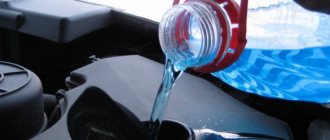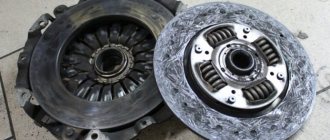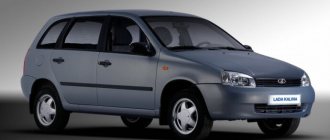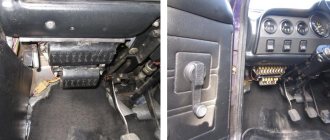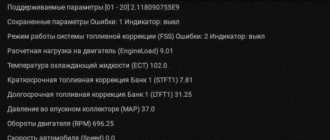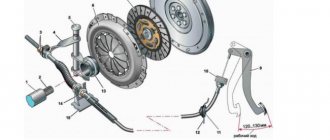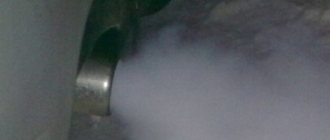What is a clutch in a car
The clutch in the design of a vehicle serves as an intermediary between the engine and the gearbox.
Allowing smooth transfer of power from the engine flywheel to the input shaft of the gearbox. Next, all the power from the power unit goes to the wheels. Thanks to the clutch, power is transferred to the wheels in increasing order, and not in its entire volume at once. This allows you to preserve the integrity of many elements of the engine and transmission, and also increases driving comfort, thanks to a soft start and imperceptible gear changes. Also, the clutch plays the role of a fuse, which takes all the power upon itself during heavy braking. And it prevents the transmission from receiving a sensitive blow, thereby saving the car owner from inevitable repairs.
Today, thanks to the constant work of engineering in the development departments of automakers, there are many options and clutch mechanisms that differ in some design elements, but are built on a single principle of torque transmission.
To explain it in simple words, the principle of operation of the clutch can be described as follows: the device itself is made in a metal case, called a basket, which is attached to the flywheel of the power unit. At the same time, inside the basket there is a clutch disk that interacts with the input shaft thanks to a splined connection, and the engine flywheel through the drive disk and special elements on it with an increased coefficient of friction. In normal mode, all discs are pressed tightly against each other, and the power from the engine flywheel is transmitted in full to the input shaft. But when you press the clutch pedal, the downforce of the springs decreases and the discs separate, thereby stopping the power supply.
The clutch is divided according to several features, one of them is the operating environment of the discs - dry or wet. In this case, a scheme with a dry type of power transmission is most often used. This design is easier to manufacture and operate, since no additional oil bath is required.
You can also distinguish the mechanism by the principle of operation of the clutch pedal. Sometimes, the downforce of the springs in the basket can be high, so various options for lightening the pedal are invented. At the moment, mechanical, hydraulic, electrical or a combination option is used.
By design, we can note some of the main elements of the mechanism - these are the clutch disc, the pressure plate (standing inside the basket and transmitting torque from the engine flywheel), the release bearing, the bearing drive fork and the entire structure of interaction of the clutch with the pedal in the cabin.
Separately, automatic transmissions can be distinguished. These devices have different design features, including different types of clutch, or no clutch at all.
But if the design includes a clutch (usually in robotic gearboxes), then a wet circuit is used, and pressing the pedal or switching gears is simulated using electric servos or hydraulic mechanisms.
Also, “automatic machines” can have a multi-disc clutch or a double clutch that works in turn. In this case, there is a clutch of a standard design and an additional one inside the gearbox.
A little about the device and purpose
The clutch is the main mechanism of a car's transmission, allowing us, without stopping the engine, to move away smoothly and change the intensity of traffic, changing gears while driving.
On passenger cars, single-plate friction clutches with a hydraulic drive are predominantly installed. The mechanism, located outside and inside the basket-casing, bolted to the flywheel, consists of the following parts:
- flywheel;
- driven and driven disks with friction linings;
- springs pressing the drive disk to the flywheel;
- clutch release forks;
- release levers;
- push clutch;
- release bearing;
- pedal shaft and clutch pedal.
Replacing the VAZ 2109 clutch.
The mass-produced VAZ 2109 clutch has a load reserve of approximately 50 percent. Therefore, when the engine is forced, it simply cannot withstand the increasing loads and begins to “slip” and break. This problem can be solved by replacing the clutch.
At the same time, the new clutch must correspond to the existing loads, have the necessary margin of safety, and also transmit the engine torque to the input shaft and to the wheels. After all, when the clutch begins to slip, it constantly heats up, which begins the process of its destruction. Which is unacceptable, because this component of the car plays one of the key roles in the design of the latter. That is why the car owner should pay increased attention to the technical condition of the clutch.
Signs of a bad clutch
Problems with the clutch disc itself or associated parts can cause a variety of symptoms.
- Your car may run poorly: it may start to move slowly when you engage a gear, or it may jerk at low speeds, especially when starting in first gear. Or it may be difficult to force the car into reverse or into gear at all.
- Noises may indicate a problem: your pedal may be making noise, or your transmission may be making noise when the car is in neutral. You may hear a squealing or growling sound when you press the pedal, or a rustling sound when you change gears.
- The pedal may give you clues: it may vibrate, wobble or pulsate, be stiff and difficult to press, or sag and not return to its original position. Below I discuss all of these symptoms and tests you can do yourself to diagnose.
This is interesting: Symptoms of a malfunctioning throttle position sensor and how to check
Clutch does not work: possible reasons
The main problem is wear of the clutch disc, since this is the most loaded element.
However, clutch malfunctions can be associated not only with the disc and arise for a variety of reasons.
Clutch drive
In the clutch drive device with a cable, it is the cable that often stretches and breaks. The clutch hydraulic drive may become airy or leaking, and the slave cylinder may also fail.
On robotic boxes with electric drive, the actuator electric motor becomes unusable, and malfunctions in the operation of the control unit also occur.
Clutch mechanism
As for the clutch itself, the release bearing and pressure plate often fail, and the pressure plate diaphragm spring becomes deformed or breaks.
We also recommend reading the article on how to change the clutch fork without removing the gearbox. From this article you will learn about available methods for installing the clutch fork without removing the gearbox.
The driven disc also suffers, since the friction linings are worn out or damaged, oil gets on them, the disc hub gets stuck on the splines of the gearbox shaft, and the damper springs wear out and break.
Diagnosis of problems
The clutch does not disengage (“drive”)
When the discs do not move completely apart when you press the pedal, they say the clutch is “driving.” That is, the disks remain in some contact, and it does not turn off completely. Experienced drivers know how to check the clutch for incomplete disengagement. Diagnosis is simple. If at low speeds with the pedal pressed all the way, first gear is engaged easily and without extraneous noise, the shutdown occurs completely. If switching occurs with difficulty and is accompanied by gear noise, it “drives.”
The reasons for this may be:
a) mechanical
- the driven disk linings are broken or the rivets on them are loose;
- decrease in full pedal travel (tight clutch);
- the driven disk is warped and its end runout exceeds 0.5 mm;
- the pressure plate is warped or warped;
- the hub of the driven disk jams on the splines of the input shaft in the gearbox;
- the rivets securing the pressure spring are loose;
- irregularities have formed on the surface of the friction linings of the driven disk.
b) associated with hydraulic drive
- fluid leakage from the hydraulic system;
- air has entered the system.
Elimination of mechanical causes involves adjusting the drive, cleaning and lubricating the splines, straightening or replacing the driven disk and, most often, replacing the friction linings. Every clutch has to be replaced at some point. Problems in the hydraulic system require bleeding to remove trapped air, checking the tightness of connections and the integrity of the pipeline. If necessary, you will have to replace failed parts, such as the main and working cylinders if fluid leaks from them.
Does not turn on (“slips”)
When, while driving, you begin to smell a burning smell, and on a climb your car noticeably slows down and generally begins to accelerate worse, you don’t even need diagnostics: the clutch is slipping. This means that the driven and driven discs do not close tightly enough when the clutch is engaged. There is an easy way to check the clutch. To do this, put the car on the parking brake and start the engine. Squeeze the clutch and engage the gear. Smoothly press the gas pedal and just as smoothly release the clutch. The engine should stall. If it continues to work, it means the clutch is slipping.
Reasons for incomplete inclusion:
- there is no free play of the pedal;
- the friction linings of the driven disk are burnt or worn out;
- oil has got or continues to get on the friction linings, on the surface of the pressure plate and flywheel.
These reasons can also be eliminated by adjusting the drive and replacing the linings. Oil that gets on the rubbing surfaces, which results in a slipping clutch, must be removed by thoroughly washing the contaminated areas with white alcohol. Of course, it is necessary to find out and eliminate the reason for its appearance.
This is interesting: Instructions for replacing the fuel pump yourself
Checking clutch wear
It’s quite easy to check the degree of wear of the driven disc and understand that the clutch needs to be changed. In particular, you need:
- Start the engine and engage first gear.
- Without accelerating, try to move off and check the condition of the clutch disc.
- if the clutch “grabs” at the very beginning, it means that the disc and clutch as a whole are in excellent condition;
- if “seizing” occurs somewhere in the middle, the disc is worn out by 40...50% or the clutch requires additional adjustment;
- if the clutch is sufficient only at the end of the pedal stroke, it means that the disc is critically worn out and requires replacement. Or you simply need to adjust the clutch using the appropriate adjusting nuts.
Why change the cable?
The VAZ 2114 clutch cable must be replaced when the first signs of its malfunction are detected: the pedal sticks, moves slowly or has completely fallen. Otherwise, the operation of the clutch will be disrupted, and damage to the gearbox and other transmission elements may occur. And this is a more complex repair and completely different costs.
If during disassembly you find that the cable is not damaged, but its movement is nevertheless tight, it is necessary to develop the part. Pour oil into the casing and pull it toward and away from you until the movement weakens.
How to repair a car clutch
This article is for informational purposes only, so it will not contain exact instructions on how to replace the clutch, but a few tips will not hurt. First of all, it is worth reminding inexperienced car owners that contacting a trusted technical inspection station is a guaranteed high-quality and fastest possible repair. Naturally, it will cost more, but if you take into account the time spent on independent repairs, especially if the car is an assistant in earning money, then this will be the most profitable solution. First of all, you need to decide whether the breakdown occurred in the mechanism itself or in the clutch pedal mechanism and its drive. This will vary the complexity and duration of the repair. And also, it will be less offensive if you disassemble the entire mechanism and it turns out that a jammed clutch cable is to blame for the malfunction.
If you decide to repair it yourself, you can purchase in advance the entire set of the clutch mechanism - basket, disc and release bearing. Of course, only one part can come out of the clutch, but you have to agree. If the car has already traveled 200,000 kilometers, and only the disc needs to be replaced, then after a short time. The transmission will have to be disassembled again to replace other mechanisms. That's why. A new kit should be installed immediately for reliable repairs.
Also, you should not crawl under the car and unscrew all the bolts in a row. Before repairs, it is advisable to study in detail all the necessary information on dismantling, installing and adjusting the clutch on your car model. It is in this case that a beginner in the repair business will be able to perform high-quality car repairs that will last for a long time.
Clutch basket malfunctions
Failure of the clutch basket elements can be expressed in the following:
- Noise when pressing the clutch pedal. However, this symptom may also indicate problems with the release bearing, as well as with the driven disk. But you need to check the elastic plates (so-called “petals”) of the clutch basket for wear. If they are significantly worn out, repair is impossible, but only replacement of the entire assembly.
- Deformation or breakage of the pressure plate diaphragm spring. It needs to be inspected and, if necessary, replaced.
- Warping of the pressure plate. Often simply cleaning helps. If not, you will most likely have to change the entire basket.
Clutch disc malfunction
Problems with the driven clutch disc result in the clutch “driving” or “slipping.” In the first case, for repair it is necessary to perform the following operations:
- Check the drive disk warpage. If the value of the end warpage is equal to or greater than 0.5 mm, then the pad on the disk will constantly cling to the basket, which will lead to a situation where it will constantly “lead”. In this case, you can either get rid of the warping mechanically, so that there is no end runout, or replace the driven disk with a new one.
- Check for jamming of the driven disk hub (that is, misalignment) on the splines of the transmission input shaft. You can get rid of the problem by mechanically cleaning the surface. After this, it is allowed to apply LSC15 lubricant to the cleaned surface. If cleaning does not help, you will have to change the driven disk, or in the worst case, the input shaft.
- Oil getting on the driven disc causes the clutch to slip. This usually happened with older cars where the seals are weak and engine oil can leak from the engine onto the disc. To eliminate it, it is necessary to inspect the seals and eliminate the cause of the leak.
- Friction lining wear. On old disks it could be replaced with a new one. However, nowadays car owners usually change the entire driven disk.
- Noise when pressing the clutch pedal. If the damper springs of the driven disk are significantly worn, a grinding or clanging noise may occur from the clutch assembly.
This is interesting: How to change the fuel filter yourself?
Release bearing failure
Clutch release bearing: principle of operation, symptoms of malfunction
The clutch release bearing in the gearbox is engaged when the driven disk is separated from the drive disk. Having learned the principle of operation, you can understand the signs and causes of the malfunction, and also check it yourself Read more
Diagnosing a faulty clutch release bearing is quite simple. You just need to listen to its operation while the engine is idling. If you press the clutch pedal all the way in neutral and an unpleasant clanging sound comes from the gearbox, the release bearing has failed.
Please note that it is advisable not to delay replacing it. Otherwise, the entire clutch basket may fail and you will have to replace it entirely with a new one, which is much more expensive.
Clutch master cylinder malfunctions
One of the consequences of a malfunctioning clutch master cylinder (on machines that use a hydraulic system) is clutch slipping. In particular, this happens because the compensation hole is significantly clogged. To restore functionality, it is necessary to inspect the cylinder, dismantle and wash it and the hole. It is also advisable to verify the overall performance of the cylinder. We drive the car into the inspection hole, ask an assistant to press the clutch pedal. When pressing with the system working, you will see from below how the master cylinder rod pushes the clutch system fork.
Also, if the clutch master cylinder rod does not work well, then the pedal, after pressing it, may return very slowly or not at all to its original position. This can be caused by prolonged idle time of the machine in the fresh air, thickened oil, or damage to the cylinder surface mirror. True, the reason for this could be a failed release bearing. Accordingly, to fix the problem, it is necessary to dismantle and inspect the master cylinder. If necessary, you need to clean it, lubricate it and, preferably, change the oil.
Another failure associated with the master cylinder in the hydraulic clutch system is that the clutch disengages when the drive pedal is suddenly pressed. Reasons for this and solutions:
- Low fluid level in the clutch system. The solution is to add fluid or replace it with a new one (if it is dirty or according to regulations).
- Depressurization of the system. In this case, the pressure in the system decreases, which leads to abnormal operation.
- Damage to elements. Most often - the working cuff, but possibly the mirror of the clutch master cylinder. They need to be inspected, repaired or replaced.
Clutch pedal malfunctions
The reasons for the clutch pedal not working correctly depend on which clutch is used - mechanical, hydraulic or electronic.
If the car has a hydraulic clutch and at the same time it has a “soft” pedal, then the system may become air-tight (the system has lost its tightness). In this case, you need to bleed the clutch (expel the air) by replacing the brake fluid.
On a mechanical clutch, often the reason that the pedal falls “to the floor” is that the clutch fork has worn out, after which it is usually put on the hinge. Such a breakdown is usually repaired by welding on the part or simply by adjusting it.
When the clutch needs adjustment
Adjusting the VAZ 2114 clutch may be required in the following situations: The clutch has been completely replaced. The clutch was repaired and its individual elements were replaced. The clutch travel is too large or, conversely, insufficient.
Clutch cable VAZ 2109
If everything is clear with the first two reasons, then in the latter case simple measurements should be performed. To do this, you need to measure the distance between the minimum and maximum positions of the pedal (that is, in situations when the pedal is pressed to the floor and when the pedal is freely released). The optimal value of this distance is in the range from 12 to 13.5 cm. If in fact it turns out to be larger or smaller than the specified dimensions, it is recommended to make an adjustment.
If the clutch travel exceeds 16 cm, then you should immediately stop all driving and make adjustments as soon as possible. In addition, in some cases, too much stroke may indicate severe wear of the friction linings located on the driven disk, as well as the need to replace them.
How to avoid clutch problems?
To extend the life of the clutch, it is enough to follow a few simple rules. Firstly, you need to ensure that it is adjusted correctly, otherwise the clutch can either “drive” or “slip”. Secondly, you should not overload the clutch - for example, skidding intensively and for a long time in snow or mud, starting abruptly, changing gears with the clutch pedal not fully depressed, keeping it half-depressed, and so on. Finally, you should be wary of requests to “tow,” especially if the clutch condition is unknown and the weight of the vehicle being towed is similar to or greater than the weight of your own vehicle. Of course, the clutch can fail due to simple wear and tear or a manufacturing defect, but often the one who presses the leftmost pedal is to blame for its premature death.
Sources
- https://carsweek.ru/articles/kak-ponyat-chto-stseplenie-vyshlo-iz-stroya/
- https://ZnanieAvto.ru/mufta/neispravnosti-scepleniya.html
- https://santavod.ru/propalo-sczeplenie-prichiny-neispravnosti-priznaki/
- https://KrutiMotor.ru/neispravnosti-stsepleniya-priznaki-i-prichiny/
- https://etlib.ru/blog/1137-neispravnosti-stsepleniya
- https://www.kolesa.ru/article/kak-rabotaet-stseplenie-kakovy-ego-tipichnye-neispravnosti-i-kak-ih-izbezhat
[collapse]

